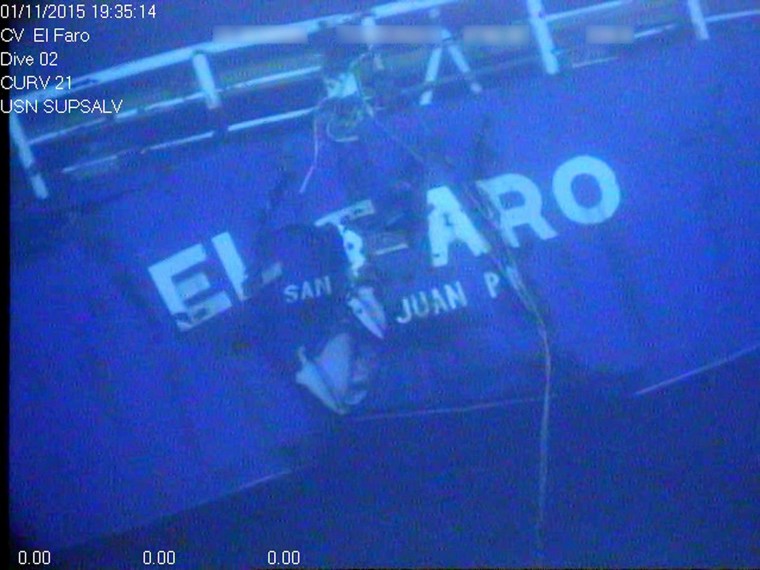A second mission will be needed to recover the voyage data recorder from the wreckage of the El Faro, the cargo ship that sank amid Hurricane Joaquin, the National Transportation Safety Board said Wednesday.
The NTSB announced Tuesday that the data recorder had been located in the wreckage of the El Faro, under 15,000 feet of water, about 41 miles northeast of the Bahamas. All 33 of the ship’s crew are presumed dead.
The research vessel Atlantis located the data recorder, which was mounted on the El Faro’s mast, but a second mission must now be launched to recover it, the NTSB said Wednesday.
“Now that we have been able to see just how the VDR is oriented relative to the mast structure, it’s clear that we’re going to need specialized deep-water salvage recovery equipment in order to bring it up,” Brian Curtis, acting director of the NTSB Office of Marine Safety, said in a statement Wednesday.
"Extracting a recorder capsule attached to a four-ton mast under 15,000 feet of water presents formidable challenges, but we’re going to do everything that is technically feasible to get that recorder into our lab," he said.
Related:El Faro Owner Settles With Families of Sunken Ship's Crew Members
The data recorder may hold conversations and sounds on the ship's navigation bridge, which could provide clues as to what occurred before the 790-foot freighter sank, federal authorities have said.
Atlantis will continue gathering images of the ship’s hull before leaving the site on Saturday, the NTSB said. It is hoped that a second mission to recover the recorder could be launched and completed within the next several months, the agency said.
The El Faro went down in October as it was traveling from its home port of Jacksonville, Florida, and San Juan, Puerto Rico.
When the ship left port on Sept. 29, Joaquin was just a tropical storm, but it quickly grew to a Category 4 hurricane and moved closer to the Bahamas and into the El Faro's path. It is believed the ship lost propulsion, leaving it stranded in the grip of the hurricane.

